About
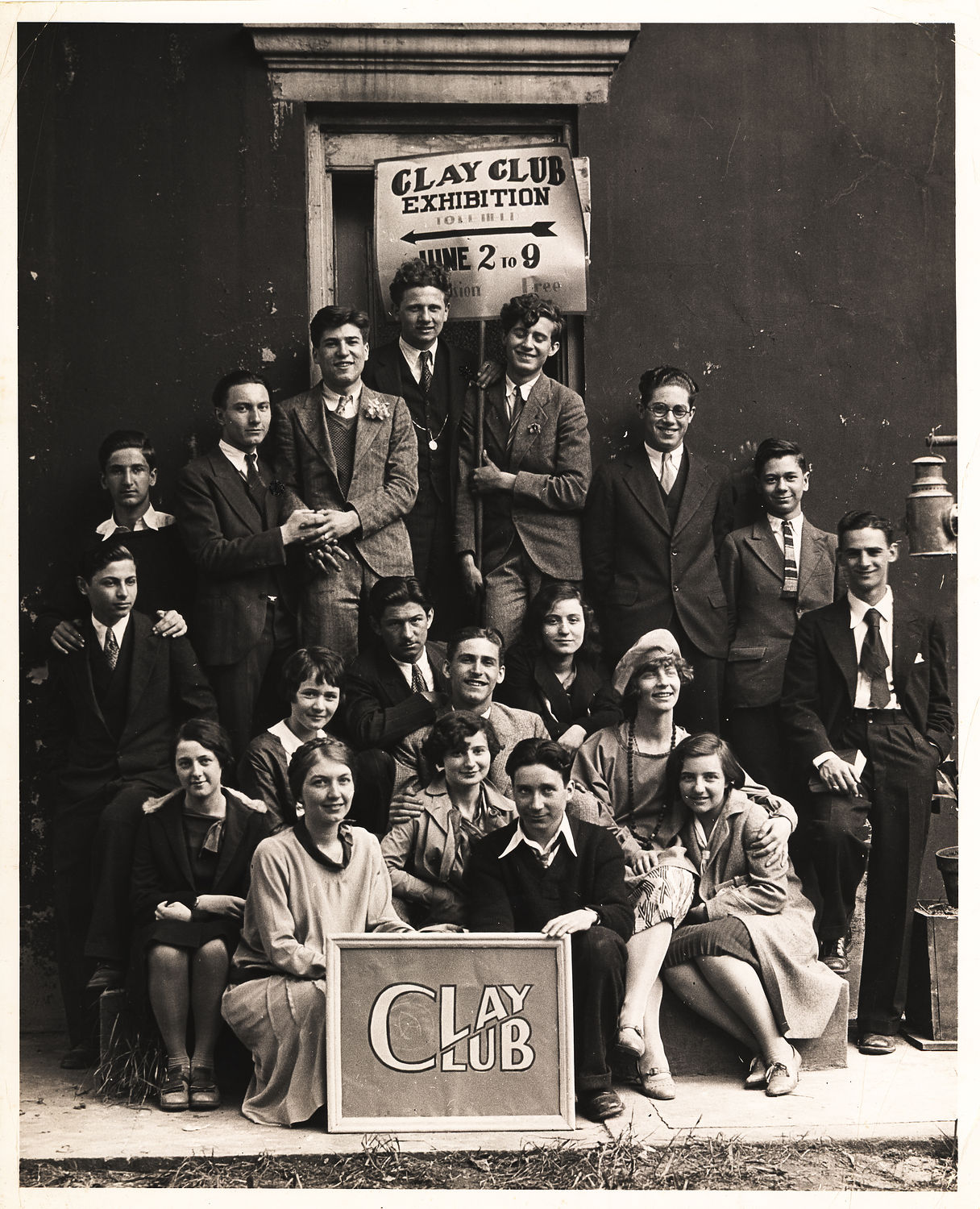
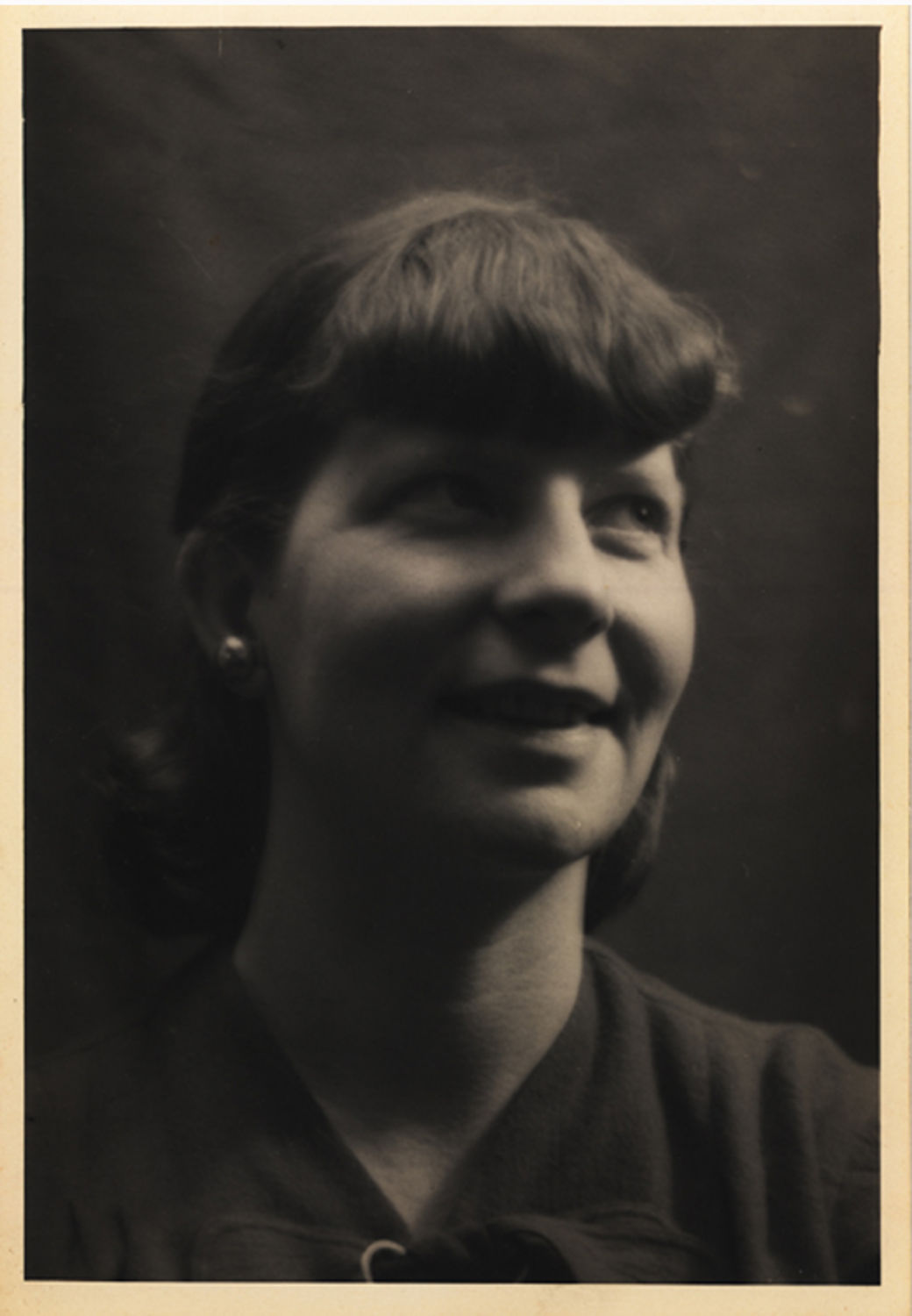
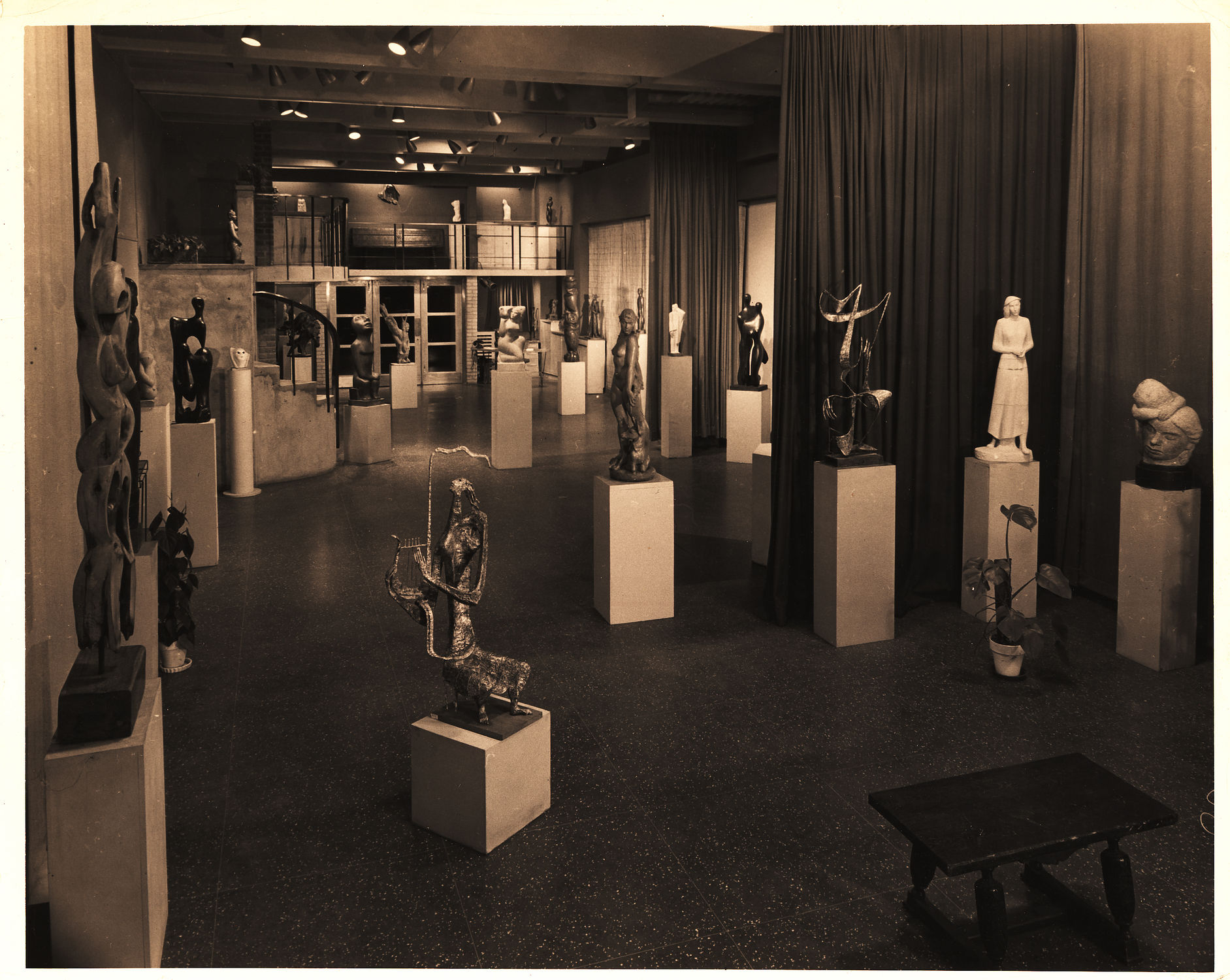
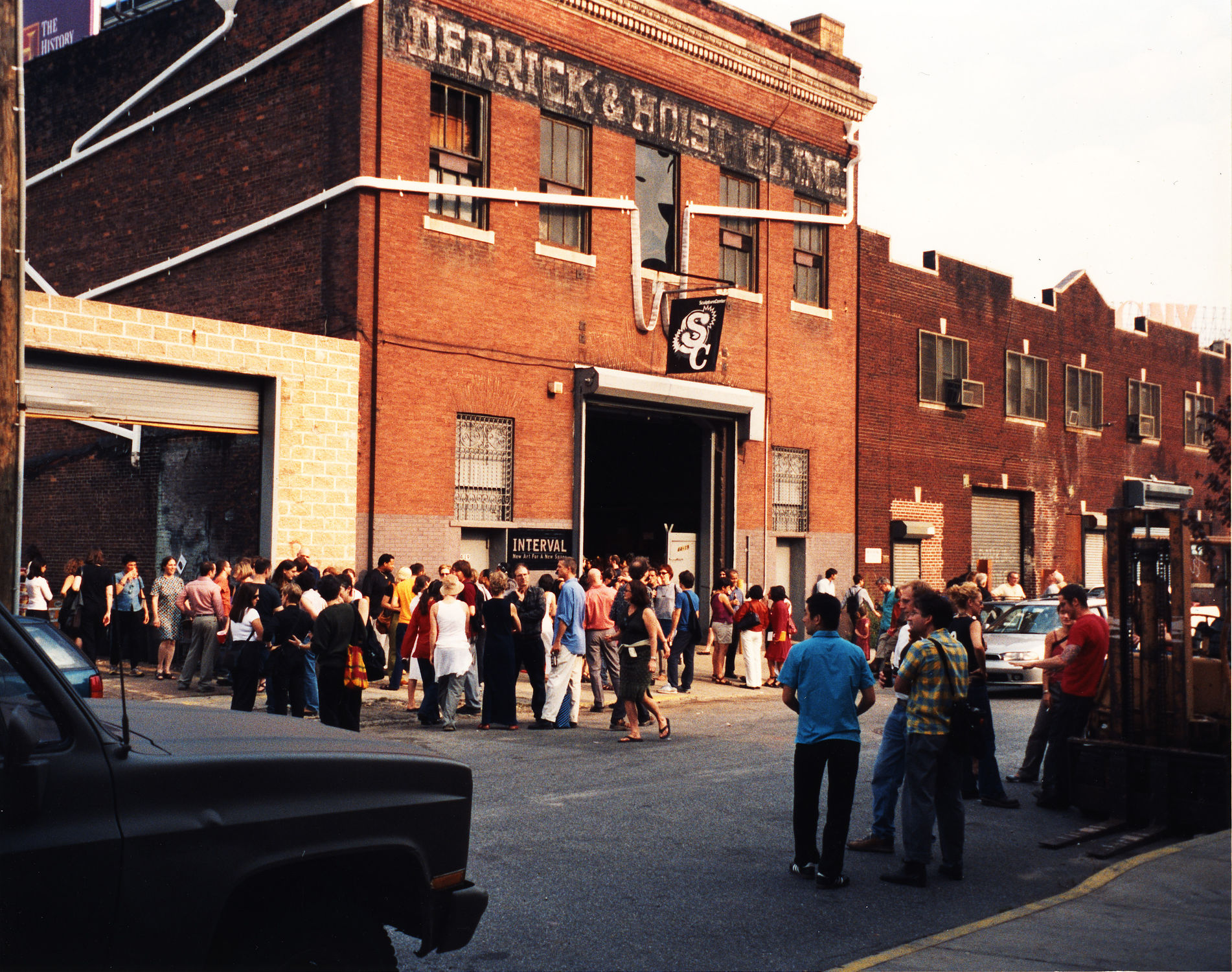
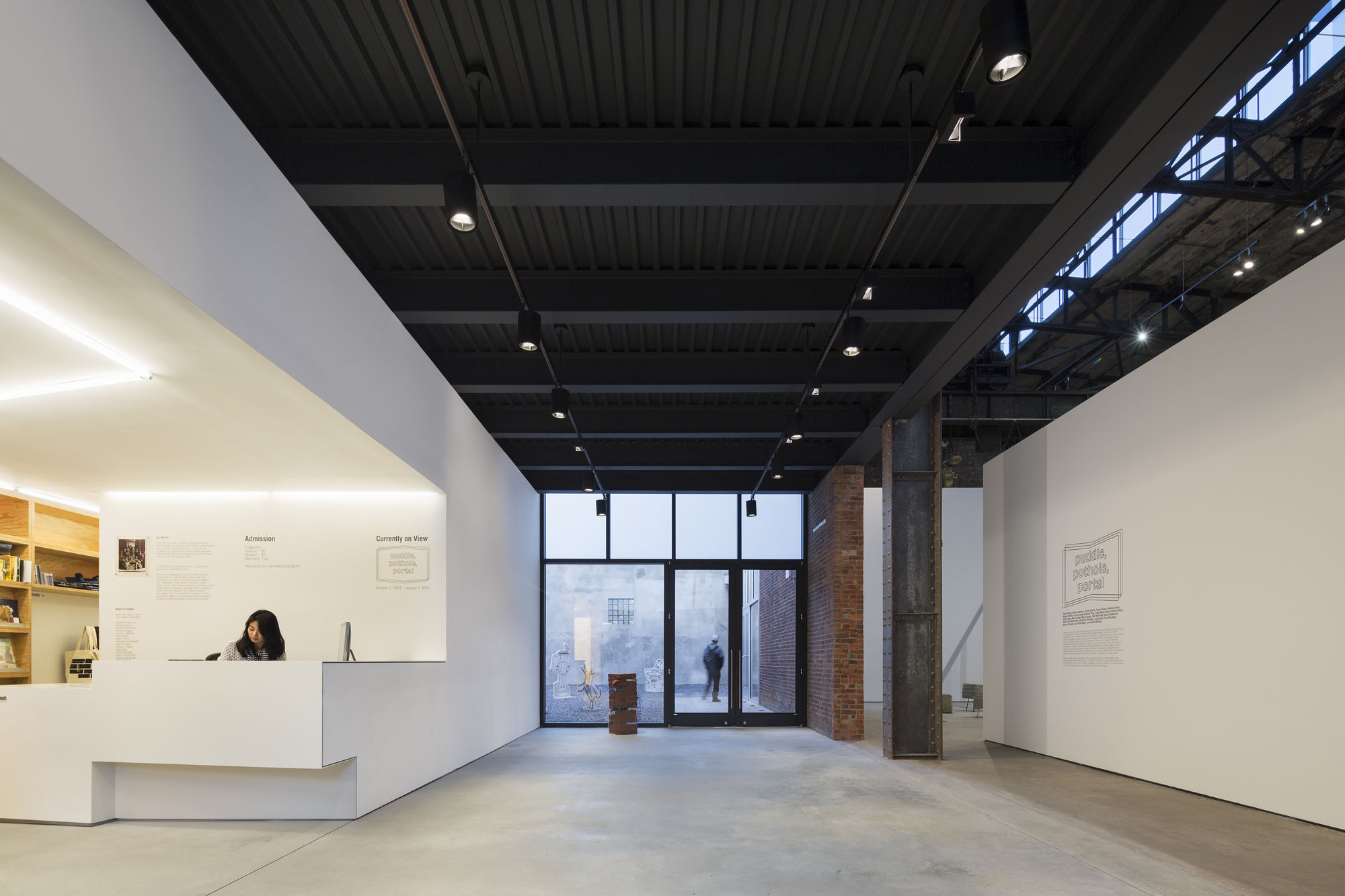
Early group celebrating first annual Clay Club exhibition
History
Overview
SculptureCenter has been an active contributor to New York City's cultural community since 1928. Originally founded as The Clay Club by sculptor Dorothea Denslow, SculptureCenter was renamed in 1944 and in 1948 it moved to a carriage house on East 69th Street in Manhattan. Here it established a ground floor gallery space dedicated solely to sculpture with workshops and studio space on the upper floors. As the field of sculpture expanded and evolved over the course of the next half-century, SculptureCenter's exhibition and education programs have also expanded to respond to the needs of artists working today. To better Accommodate the exhibition of large-scale work, in 2001, SculptureCenter purchased a former trolley repair shop in Long Island City, Queens. The building was redesigned by artist and designer Maya Lin, and includes 6,000 square feet of interior exhibition space and a 3,000 square foot outdoor exhibition space. In 2014, the building was expanded and renovated by Andrew Berman Architect.
Early Years
In 1928, sculptor Dorothea Denslow (1900-1971) opened her Brooklyn studio to students and local artists as a place to work and learn about sculpture and art, founding the vibrant network and resource that would become SculptureCenter. The growing group of artists operated under the name Clay Club, and in 1930, moved to a carriage house on West 8th Street to open a studio and gallery space. During this period they had ongoing solo, group, thematic, and traveling exhibitions, as well as room to teach classes and give artists studio space. From 1928 to 1939, Clay Club hosted annual picnics on Staten Island where members would gather at a natural clay site and construct monumental sculptures. This is documented in archival 16mm film shot at the events, compiled here as Dance of the Mudmixers.
From 1941 through 1945, many of the Clay Club members fought in World War II. While they were away, the studios were turned into Sculpture Canteen. In the Servicemen's Program, members of the armed forces could utilize the Clay Club's facilities. Members taught classes and provided materials for free. After the war ended, veterans took advantage of the GI Bill to enroll in classes at the Clay Club. Serviceman Visits the Sculptor's Canteen was a silent 16mm film produced by Clay Club members to advertise the program during the war.
1950s through 1970s
In 1950, Clay Club changed its name to Sculpture Center, and relocated to a former carriage house at 167 East 69th Street. The artists, led by Dorothea Denslow, spent the next several years renovating the building themselves, eventually creating a gallery space on the first floor and workshops and studio space on the upper floors. This building was Sculpture Center's home for the next half-century.
In 1953, Sculpture Center had its 25th Anniversary Exhibition, including 87 major works from such sculptors as Alexander Calder, Louise Nevelson, and Isamu Noguchi. Through the 50's, 60's, and 70's, gallery artists showed their work on a rotating basis, while many classes were offered in the workshops and studios. There were several important and groundbreaking exhibitions in this period, including 12 Japanese Sculptors (1976), a survey of works by Japanese sculptors living in New York which highlighted the influences of both cultures.
1980s through 1990s
Sculpture Center continued its tradition of experimental programming with exhibitions such as Touch and See: Sculpture Exhibition for the Blind and Sighted in 1980, a show in which visitors were invited to touch all the sculptures.
In 1981, Sculpture Center hired its first gallery director, Marian Griffiths (1922-2008). Under Griffith's guidance Sculpture Center established many of its innovative programs in support of sculpture in the expanding field. Over the two decades of her tenure, Griffith ushered in a new era for the Sculpture Center with a renewed focus on assisting emerging young sculptors and championing their work.
Some of the highlights the period include 1984's Sound / Art, one of the first surveys of the emerging fields of sound sculpture, audio art, and the way in which sound functions as a medium of expression. Griffiths also oversaw Sculpture Center's Artist-in-Residence program which included exhibitions by artists such as Petah Coyne, Beverly Semmes, and Robert Chambers.
In 1999, Mary Ceruti was appointed as Executive Director and Chief Curator.
2000 to Present
In 2001, SculptureCenter purchased a former trolley repair shop in Long Island City, Queens. This new structure, which was redesigned by artist and designer Maya Lin, includes 6,000 square feet of interior exhibition space, and a 3,000 square foot outdoor exhibition space. SculptureCenter's new home opened to the public in December 2002. The new facility and its emphasis on exhibition space solidified the SculptureCenter's commitment to the exhibition of pioneering works by emerging and established, national and international artists.
In 2014, the Building SculptureCenter Campaign allowed for an expansion to the building, including a new 2,000 square foot addition to the existing structure. The expansion and renovation significantly improved the quality of the exhibition spaces and visitor circulation and brought the building into compliance with all current building codes including the Americans with Disabilities Act.
Over nearly 20 years with SculptureCenter, Mary Ceruti also organized dozens of solo and group exhibitions of contemporary art and curated special projects and commissions by over 50 international artists, including Nairy Baghramian, Monica Bonvicini, Alejandro Cesarco, Liz Glynn, Leslie Hewitt, Rashid Johnson, Ilya and Emilia Kabakov, Agnieszka Kurant, Mike Kelley, and Mika Tajima, among many others. Ceruti became the Executive Director of the Walker Art Center in January 2019.